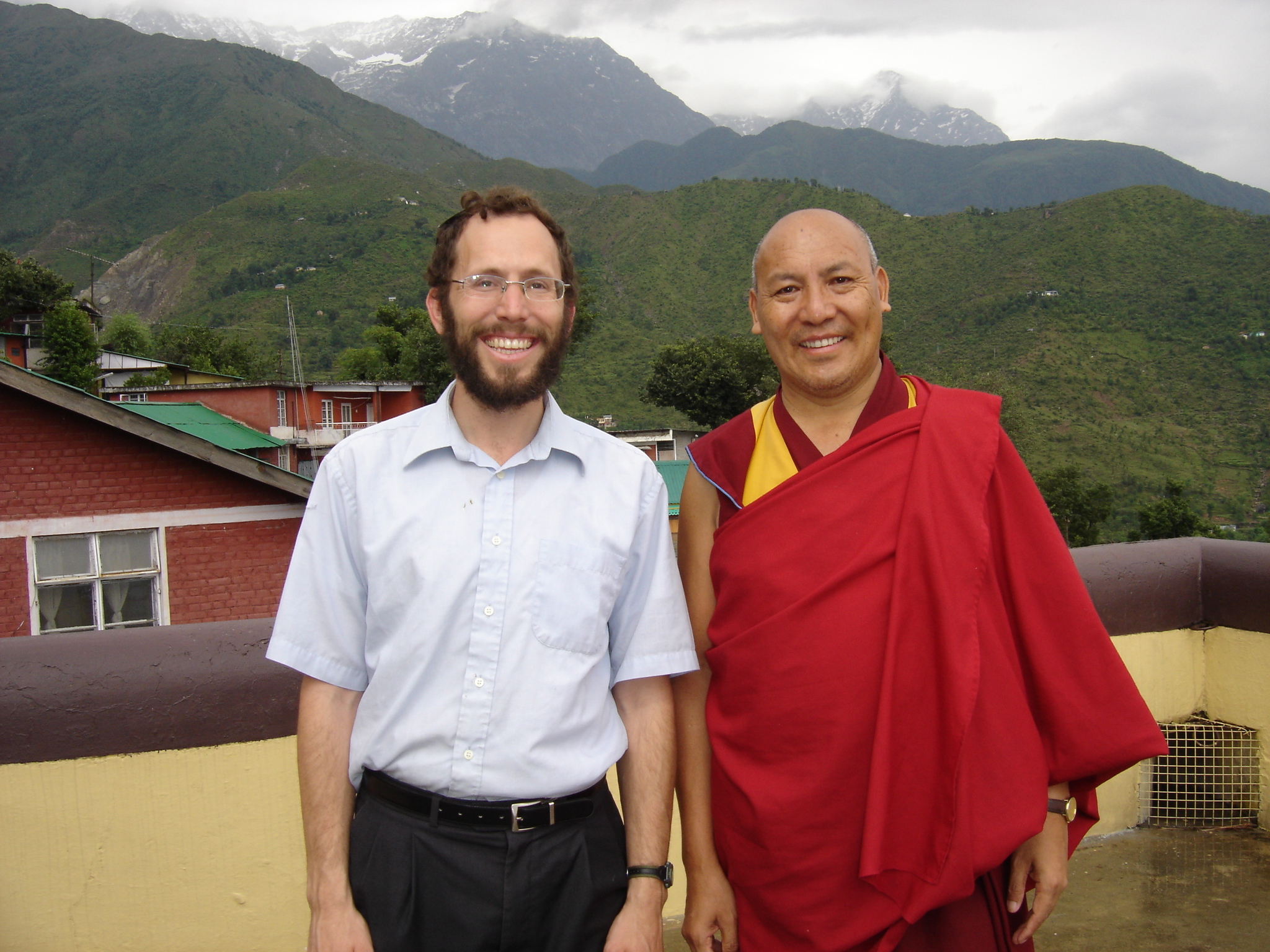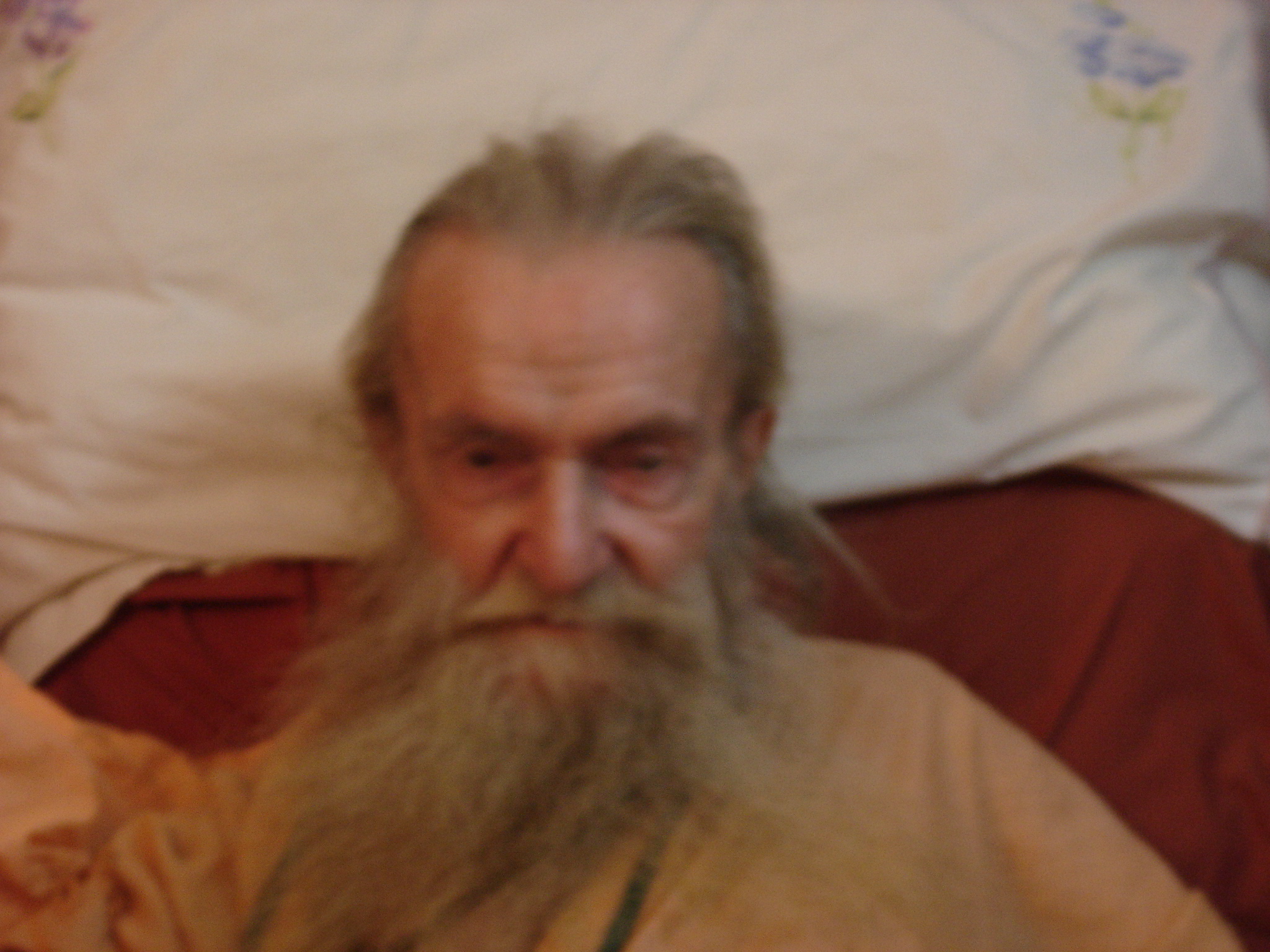
The Om with Magen David at the entrance of the Sivananda Ashram. photo credit: Yakov Nagen
Om and Shalom
The word “yoga” means “to unite.” Among practitioners, there is a custom to end each session by chanting “Om,” a sacred Indian mantra that connotes an infinitely expanding, ultimate unity. I had a Jewish yoga teacher who would conclude each lesson with “shalom,” the Hebrew word for “peace.” Unwittingly, he touched upon a profound idea: that “Om” and “shalom” rhyme is no accident, and the relation between the two words reflects both the similarities and the differences between Judaism and Eastern spiritual traditions.
For one, both “Om” and “shalom” refer to the divine: “Om,” according to the Zohar (Vayera 108b) is one of God’s names. “Shalom,” too, the Midrash says, is among God’s names (Leviticus Rabba 9:9).
Another similarity is the manner in which both words are used to summarize and conclude: “Om” often appears at the end of sacred texts, such as in Hinduism’s Upanishads. The word “shalom,” too, concludes many prayers, including the Grace after Meals (“The Lord will bless His people with peace”), Amida (“Who blesses His people Israel with peace”), and the Priestly Blessing (“and give thee peace”). In talmudic and mishnaic literature, many tractates are concluded with peace.
Both “Om” and “shalom” connote oneness and harmony. At the heart of Sefer Yetzira (The Book of Creation), one of the most ancient treatises on Jewish mysticism, lies the belief that language has the power not only to describe reality, but to act upon it, shape it, and create within it. At the root of language are three “mother” letters – alef, mem, and shin – each of which represents a different element of creation: mem stands for water, shin for fire, and alef for air (Yetzira 3:4). The three elements reflect the dialectic between fire and water, with air symbolizing the synthesis between them (2:1).
The book also describes the sounds those letters make: “Three Mothers – alef mem shin. Mem hums (domemet), shin hisses, and alef is the breath of air deciding between them” (ibid.). Rabbi Abraham ben David, in his commentary on Sefer Yetzira, divulges a secret: “Mem hums, meaning a still small voice.” The term “still (demama) small voice” refers to what Elijah the Prophet hears at Horeb, the Mount of God, where he shelters from his pursuers (I Kings 19). The still hum of the mem is especially reminiscent of the “Om,” the sound of stillness thought to reflect the spiritual oneness of all being. In his commentary on Sefer Yetzira, Rabbi Aryeh Kaplan asserts, “The resemblance between [the hum of the mem] and the ‘Om’ chant is certainly more than coincidental” As we saw in the above quote from Sefer Yetzira, the humming mem symbolizes water. In Eastern culture as well, we find a potent association of the “Om” with water. One well-known expression of that connection is a scene in Hermann Hesse’s novel Siddhartha, in which Siddhartha, the future Buddha, hears the “Om” in the river’s voice.
Eastern Water, Western Fire
Eastern culture and Western culture can be compared to water and fire, respectively. In the foundational text of Taoism, the Tao Te Ching, water is likened to the Tao itself (the indefinable, infinite principle that underlies and sustains all of creation). The book praises water and its attributes – nothing is as soft and yielding as water, which is yet strong enough to overcome and wear away that which is hard. Consequently, the Tao advocates inaction (Wu wei), a passive approach to reality.
Many other Eastern traditions also teach that enlightenment is attained by accepting reality and “flowing” into it, a process that takes place mostly in one’s psyche, irrespective of action. The sound of the “Om” rises up from the water.
Western culture, on the other hand, seems to be founded on fire. The calendar is derived from the solar year, and the Christian Sabbath is Sunday, the day of the sun. Greek mythology, which, in many respects, remains to this day the foundational mythology of the West, associates the dawn of civilization – the very possibility of creation and progress – with Prometheus, who stole fire from the Gods and gave it to humanity. Fire symbolizes the active principle, that which imposes its will upon reality. Dynamism, the will to effect change in the world, and the desire for progress – these are the foundations of Western society.
Shalom – a Fusion of Fire and Water
The word “shalom” contains, alongside the “Om,” the letter shin, which is associated with fire. Rabbi Nahman, based on the Zohar, likens shalom to a connection between the two elements:
What is shalom? It is what links opposites. As our sages of blessed memory elucidated (Zohar, Vayikra 12b) regarding the verse “He maketh peace in His high places” (Job 25:2): There is one angel of fire, and one of water – they are opposites, for water quenches fire – and the Lord, blessed be He, makes peace and binds them together. (Likutei Moharan, 80)
Informing the Zohar’s interpretation is the common root shared by “shalom” and “shalem,” or “whole.” In a complicated and multifaceted reality, only peace can provide wholeness by accommodating even those elements that seem to contradict and oppose one another. Indeed, Sefer Yetzira implies that the root shin-lamed-mem itself contains the opposites – both the water of mem and the fire of shin. The need to integrate fire and water refects the essential integration of doing and being which I believe is one of central messages of Judaism of how we must approach life.
Jews, as we know, are Semites, descendants of Shem, whose name is spelled shin mem. The manner in which Jewish tradition encompasses the elements of fire and water lends new meaning to the term Semite, and could perhaps shed a new light on the ubiquity of anti-Semitism throughout the ages. There are those who attack us for the element of water that we possess; others assail us for our fire. And then there are those who set upon us for the audacity to fuse the two.






